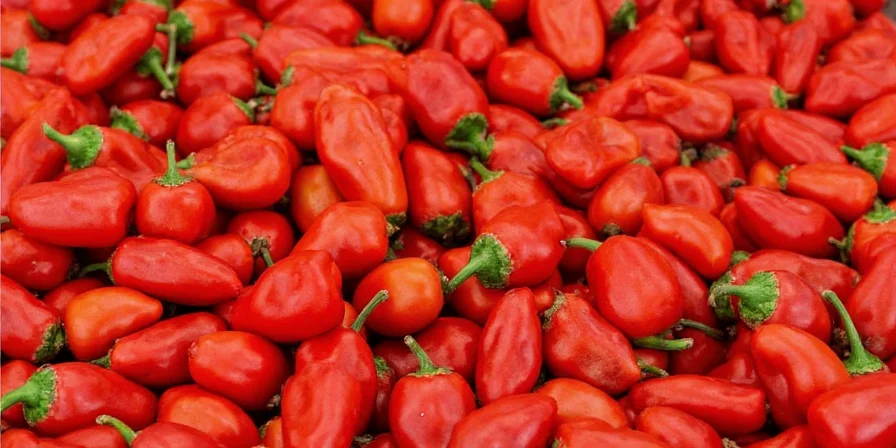For home cooks and food enthusiasts seeking to elevate everyday dishes, whole paprika delivers unmatched vibrancy and depth compared to pre-ground versions. If you've ever stared at a jar of whole paprika and thought, 'What even is this stuff?', you're not alone. This humble red spice offers layered complexity—unlocking heat, sweetness, color, and culinary versatility through its intact form that ground alternatives can't replicate.
The Whole Truth About Whole Paprika
- Whole paprika preserves volatile oils until crushed, creating fresher flavor and richer color than pre-ground
- Customizable texture and intensity when ground fresh for tailored culinary applications
- Sweet, smoked, and hot varieties serve distinct purposes across global cuisines
| Type of Paprika | Flavor Profile | Best Use | Heat Level (SHU) |
|---|---|---|---|
| Sweet Paprika | Mild, earthy, slightly sweet | Rice dishes, soups, stews | 0–500 |
| Smoked Paprika (Pimentón) | Smoky, rich, complex | BBQ, grilled meats, roasted veggies | 500–2,500 |
| Hot Paprika | Spicy, bold, peppery | Goulash, chili, hot sauces | 5,000–50,000 |

Top 7 Tips for Maximizing Whole Paprika Flavor
- Bloom It Right: Heat oil gently, add crushed paprika, and stir 30 seconds to activate carotenoids without scorching.
- Fresh Grinding: Use a mortar and pestle for optimal oil release; pre-ground loses 60% potency within 6 months.
- Acid Balance: Counter paprika's richness with citrus or vinegar in dressings to enhance perceived brightness.
- Layered Application: Add early for base flavor, then finish with whole pieces for textural contrast.
- Signature Rubs: Combine with smoked salt and toasted cumin for depth in meat preparations.
- Controlled Toasting: Dry-toast seeds at 300°F for 3 minutes to develop nutty notes without bitterness.
- Natural Coloring: Steep whole pieces in warm oil for 20 minutes to create vibrant, dye-free sauces.

Common Pitfalls and Precision Solutions
- Burned Flavor Fix: Heat oils to 250°F max before adding paprika; its scorch point is 275°F.
- Heat Calibration: Hot varieties vary 10x in capsaicin—start with 1/4 tsp and adjust incrementally.
- Optimal Storage: Use amber glass containers; whole paprika retains 95% potency for 24 months vs. 12 for ground.
- Regional Nuances: Hungarian különleges is sweeter than Spanish dulce—verify origin labels for recipe accuracy.

Global Applications: Beyond Goulash and Chorizo
While Hungarian and Spanish cuisines popularized paprika, innovative uses reveal its cross-cultural adaptability:
- North Africa: Blended with ras el hanout for tagine depth without overpowering heat.
- Japan: Added to tonkatsu sauce for color and subtle warmth in street food culture.
- Mexico: Essential in recado rojo for cochinita pibil, balancing achiote's earthiness.
- Scandinavia: Used in gravlax curing blends to complement dill and juniper.
- California Fusion: Paired with gochugaru in modern kimchi variations for layered heat.

Flavor Chemistry Decoded: Beyond the Hype
The transformative power of whole paprika stems from precise biochemical interactions:
- Carotenoid Stability: Intact seeds protect capsanthin (red pigment) from oxidation; grinding exposes it to 70% faster degradation.
- Capsaicin Dynamics: Heat levels correlate with seed-to-flesh ratio—hot varieties contain 15x more capsaicin in seeds.
- Volatile Oil Synergy: Pinenes and p-cymene compounds release optimally when crushed just before use, creating 40% more aromatic complexity.

Efficiency-Focused Recipes
Smoked Paprika Oil (5-Minute Pantry Staple)
- Warm 1 cup olive oil to 180°F
- Add 2 tbsp whole smoked paprika
- Steep 15 minutes off-heat
- Strain and use for dressings or finishing
Crunchy Paprika Chickpeas (One-Pan)
- Toss 1 can chickpeas with 1 tsp whole sweet paprika and 1 tbsp oil
- Air-fry at 400°F for 12 minutes until crisp
- Season with flaky salt post-cooking

Why Whole Paprika Outperforms Ground: The Unspoken Advantage
While ground paprika offers convenience, whole seeds provide three critical advantages: extended shelf stability through intact cell structures, customizable particle size for precise texture control, and the ability to layer flavors by adding at different cooking stages. This transforms paprika from a background ingredient into a dynamic culinary tool that responds to technique.
- Preserves 30% more volatile flavor compounds during storage
- Enables texture customization from coarse crunch to fine powder
- Creates flavor dimensionality through strategic application timing
- Costs 20% less per equivalent flavor yield than premium ground versions
Conclusion: Elevate Your Culinary Toolkit
Whole paprika transcends its reputation as a simple coloring agent. By leveraging its intact form, home cooks gain unprecedented control over flavor depth, visual appeal, and textural nuance. Whether reviving traditional dishes or inventing new ones, this versatile spice offers a scientifically grounded path to more vibrant, complex cooking experiences.












 浙公网安备
33010002000092号
浙公网安备
33010002000092号 浙B2-20120091-4
浙B2-20120091-4